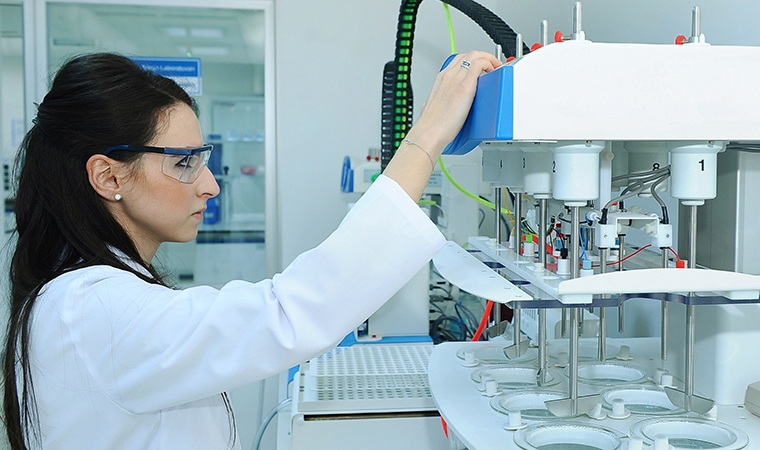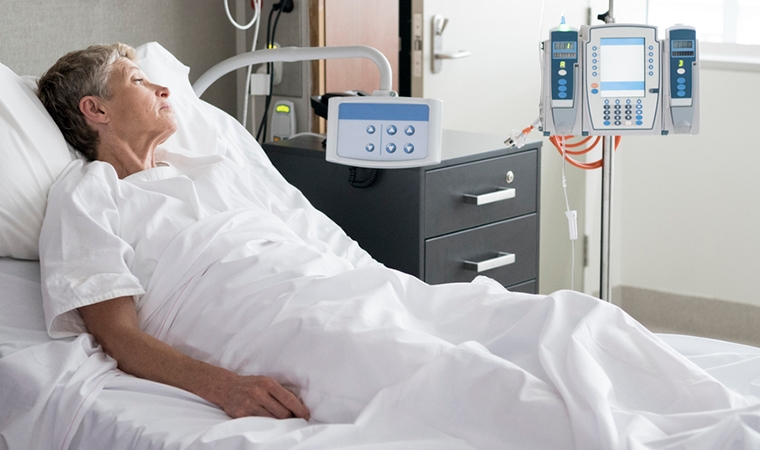Neglecting to develop a robust control strategy not only affects your business, but also holds severe consequences for the patient. To ensure the safety, efficacy and quality of your products, make sure your facility aligns with QbD principles.
Manufacturing a pharmaceutical product is associated with a certain risk to the patient, and it is the manufacturer’s priority to design a product and process with minimal risk in terms of safety, efficacy and quality.
To improve production processes and the patient's experience, we need to understand the consequences of issues with these three aspects during manufacturing - i.e. we need to know how likely it is to happen and determine opportunities to detect this failure.
When we sufficiently understand the process through well-designed experiments, we can establish controls to ensure we provide products of consistent quality with low risks. The iterative approach used to establish the product formulation, manufacturing process and appropriate controls is called Quality by Design, or QbD.
Patient focus for Quality by Design
The philosophy of science and risk-based QbD starts by focusing on the patient. What is the medical need, and what will the patient expect from the product in terms of its safety, efficacy and quality? The quality target product profile (QTPP) outlines these expectations and defines the product profile.
When it comes to developing the process, the aim is to create a product with a related manufacturing process that meets these expectations or critical quality attributes (CQAs). These are measured and must comply with the justified acceptance criteria, linking back to the QTPP and the clinical performance of the product. In most cases, the CQA acceptance criteria are formalized as product specifications.
During development, you sbhould focus on ensuring that process parameters, raw materials, and intermediate materials with an influence on the CQAs are specified and controlled. The parameters and material attributes are known as the critical process parameters (CPPs) and material CQAs. Material can refer to starting material, raw material, excipient, reagent, intermediate material or packaging material.
These defined CPPs and material CQAs are either independent or they correlate. They must be controlled either in a well-described design space, a process window, or by ranges derived from a design space to ensure the product CQAs meet the specifications and thereby the final product quality.
When we have the sufficient level of process understanding through well-designed experiments, we can establish controls to deliver products of consistent quality with low risk related to safety, efficacy and quality.
Relying on the scientific approach
A science and risk-based approach identifies material CQAs and CPPs of the manufacturing process using Design of Experiments (DoE) during development. The major workload takes place in clinical phases 2 and 3. Smart DoE takes advantage of analytical approaches including real (or near real) time in-line or at-line techniques and other relevant process data to gain maximum information from the development experiments.
Identifying CPPs is an iterative process that results in a set of production controls. This ensures the right conditions at the right quality level. Process analytical technologies (PAT) is a common element of these controls.
One way in which chemical development utilizes PAT is during the synthesis of an active pharmaceutical ingredient (API). PAT analyzers can monitor chemical reactions both in real-time and later on, and the same or a similar technique can be used to control the process.
Traditionally, samples are taken routinely, sent to the laboratory and analyzed using time and solvent-consuming techniques such as high performance liquid chromatography (HPLC) analysis. However, embracing spectroscopic techniques, such as ultraviolet-visible, infrared, near-infrared spectroscopy or raman, can save valuable time.
Speed to quality
The reaction process often follows directly without prior modelling work, allowing manufacturers to run and analyze different conditions quickly, speed up process development and increase process knowledge simultaneously. Introducing technology such as continuous manufacturing with the same scale for lab, pilot and commercial, process development becomes even faster and more cost-effective.
A control ctrategy can be established from the identified CPPs, material CQAs, ranges and acceptance criteria. The combination of all of these controls ensures that products are manufactured to meet CQAs, and when the process is operated within the design space or the derived ranges.
Without a robust and effective control strategy, manufacturers cannot ensure the product quality or QTPP. In turn, this increases the risk of losing your license to manufacture and sell a product, leaving the patient in an unacceptable situation. Establishing the link between the QTPP and control strategy is therefore crucial - for both the patient and the business.



